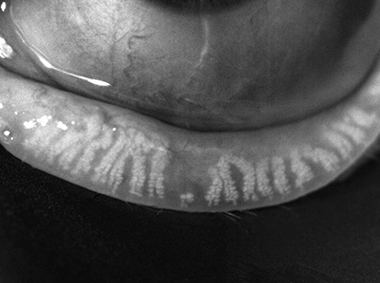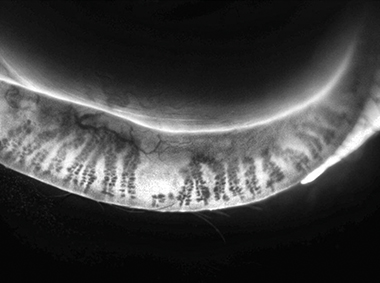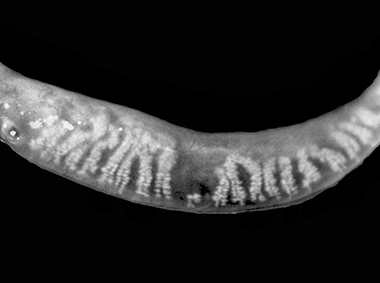How are Dry Eye and Blepharitis (MGD) Related?
Dry eye and blepharitis are closely related. Eighty-six percent of patients diagnosed with dry eye have symptoms associated with an unstable tear film due to blepharitis. Blepharitis is inflammation of the glands along the upper and lower eyelid rims. These glands are called Meibomian glands and Meibomian gland dysfunction (MGD) is another name for blepharitis. The Meibomian glands produce oils that form the top layer of the tear film that coats, protects and lubricates the surface of the eye. This oily layer of the tear film prevents the tears from evaporating quickly. If a person produces enough of the watery part of the tear film, but does not have a healthy overlying oil layer, the tears evaporate quickly and the eye becomes dry. One needs both the watery and oily parts of the tear film for a healthy eye. In most patients with dry eye, blepharitis plays an important role in causing symptoms.
As part of our Dry Eye Evaluation, the doctor will use several tests to assess and identify the root cause of your Dry Eye symptoms and recommend the best treatment for you. The Lipiscan imaging system is very important in this evaluation.
LipiScan™
Using a tool called LipiScan™, we are able to take a picture of your meibomian glands (known as “high-definition meibography”) in order to assess their condition and determine the best course of treatment to optimize the health of your eyes and eyelids. This scan is an integral component in determining the cause of your dry eye symptoms.
Below you will find examples of the images the LipiScan™ tool produces to visualize your meibomian glands.
In each of these photos, you can see healthy meibomian glands as the complete columns of “bubbles” in the eyelids to the left and right of center.
Atrophied or “unhealthy” glands in the center of each of these photos appear incomplete or simply non-existent.
Based on the results of your eye exam and Lipiscans, we may recommend Blephex or Lipiflow to help treat dry eye and blepharitis.




